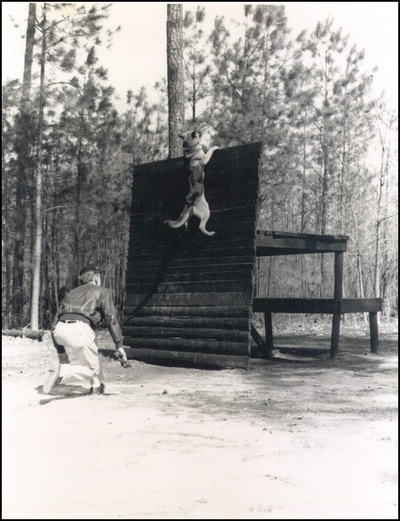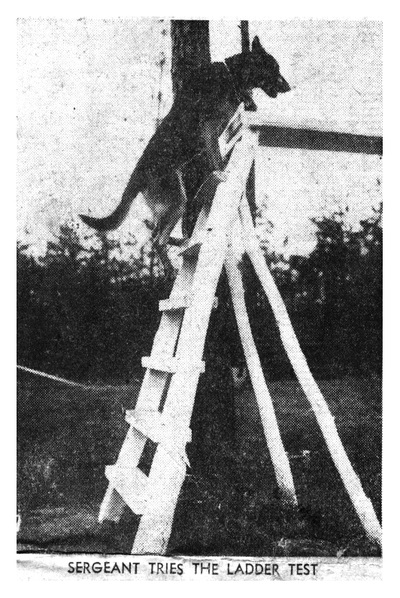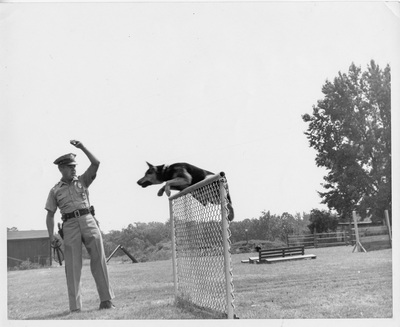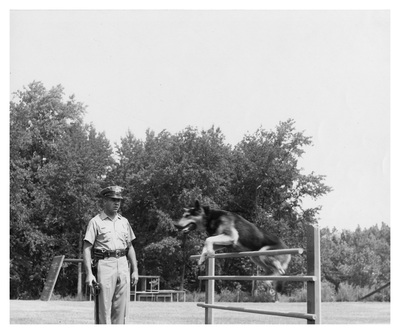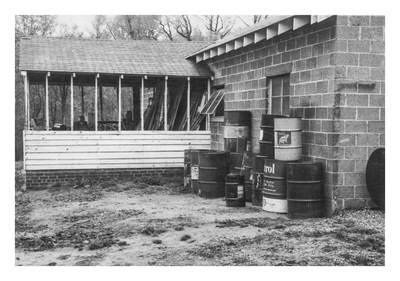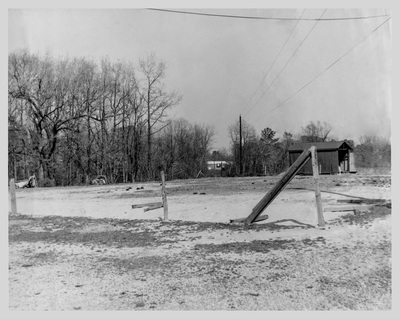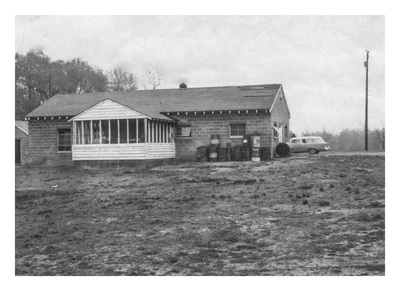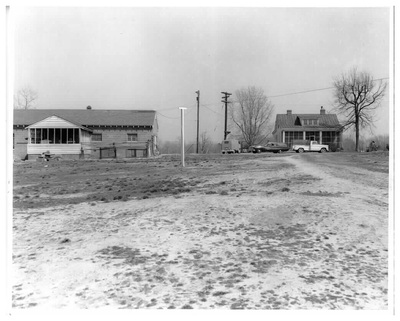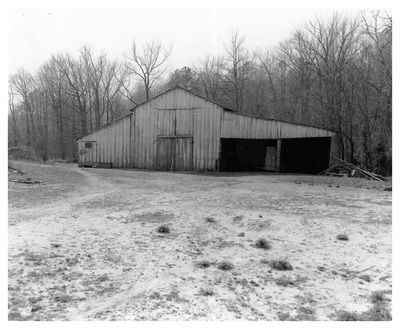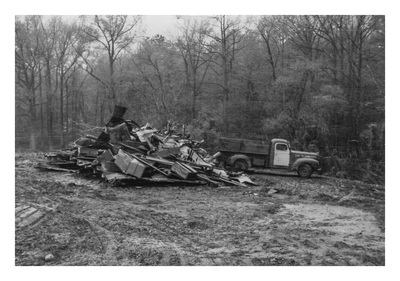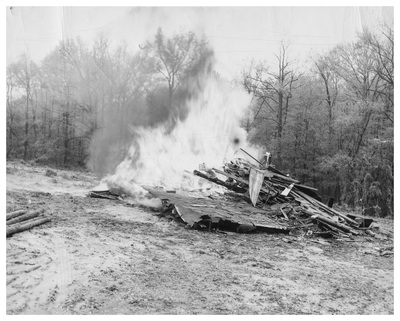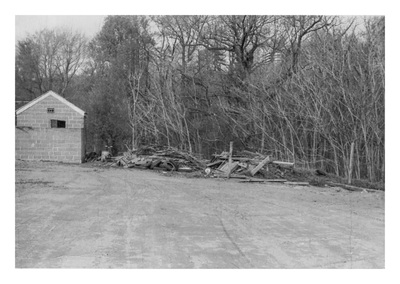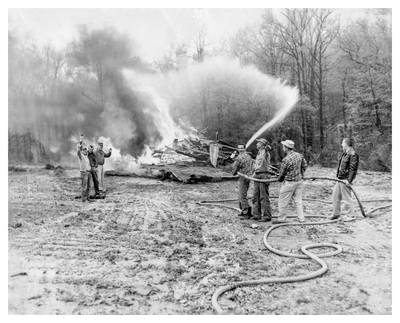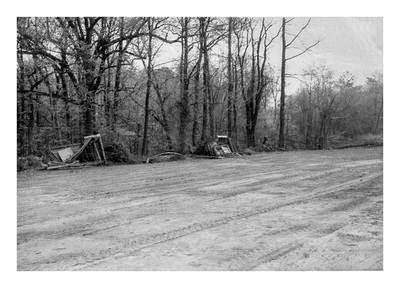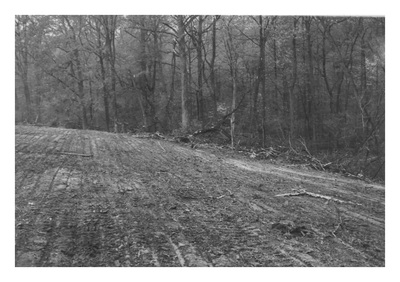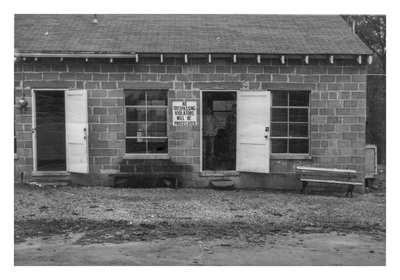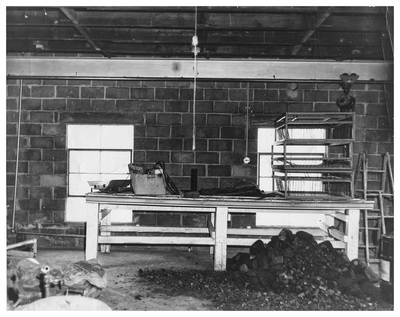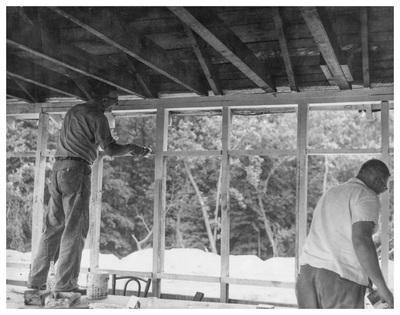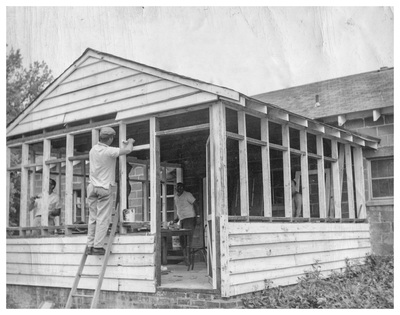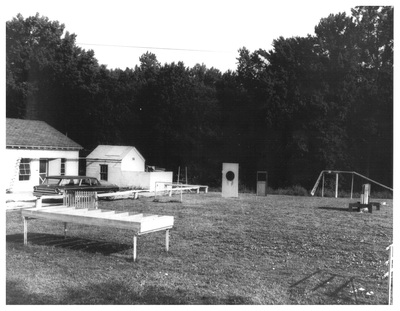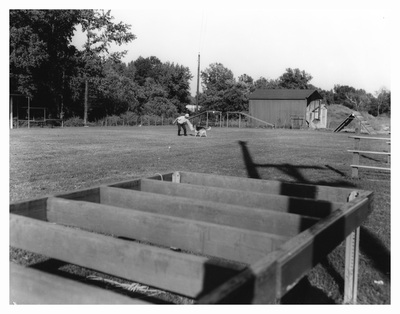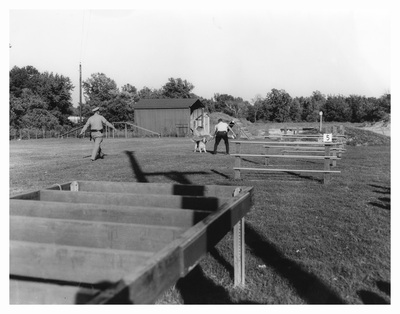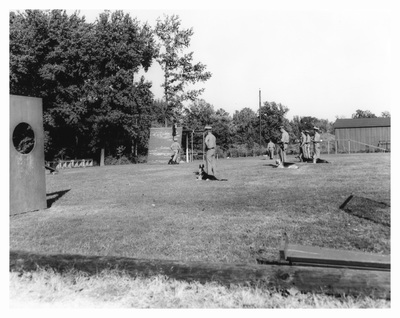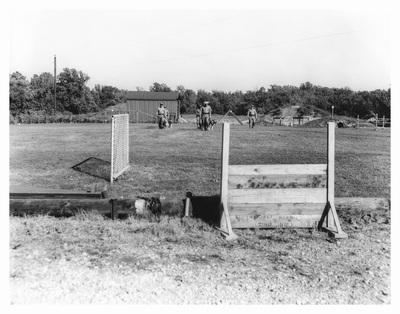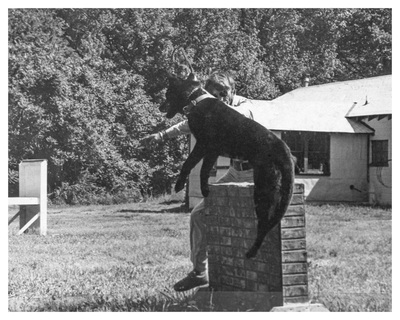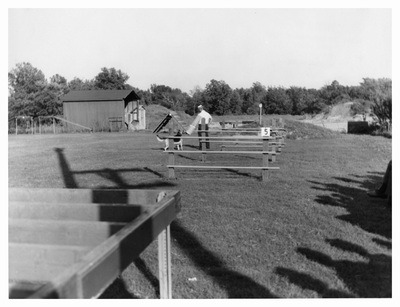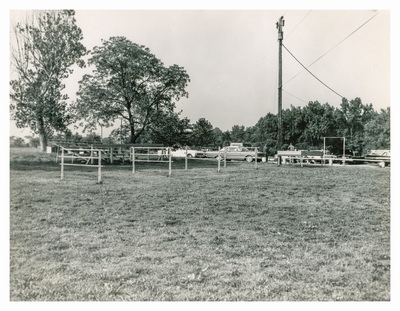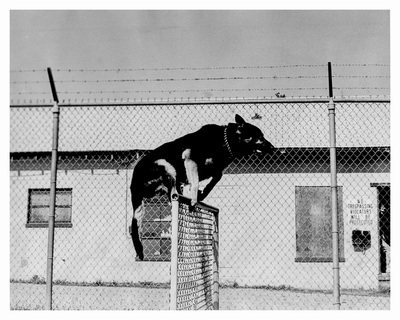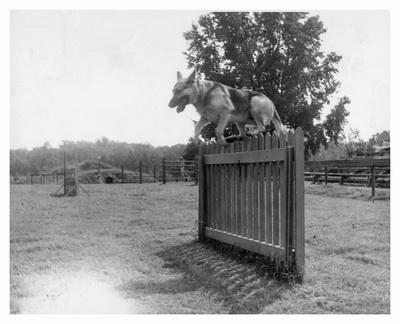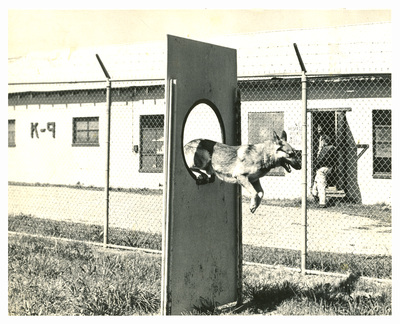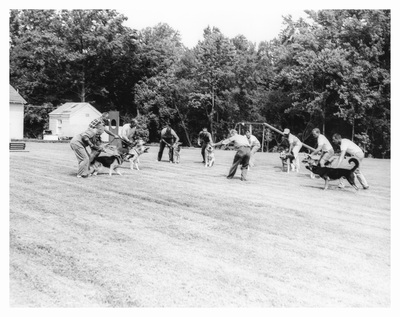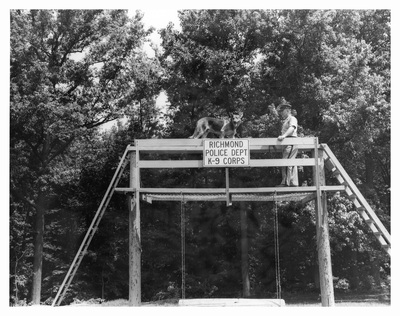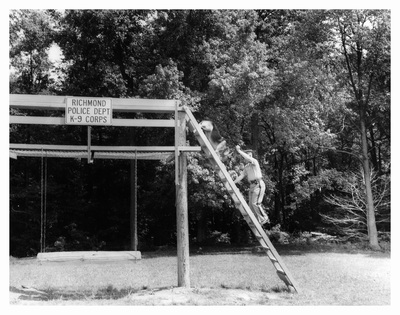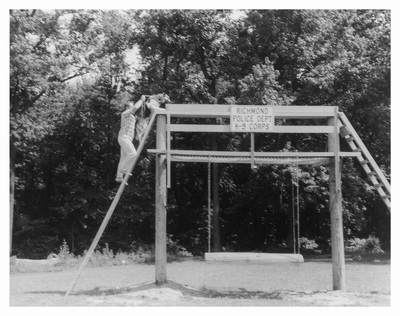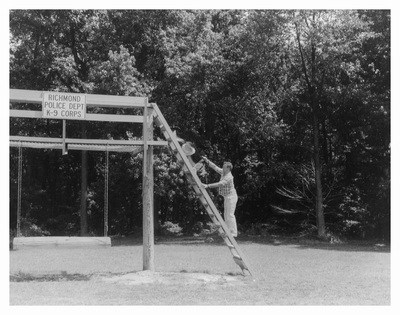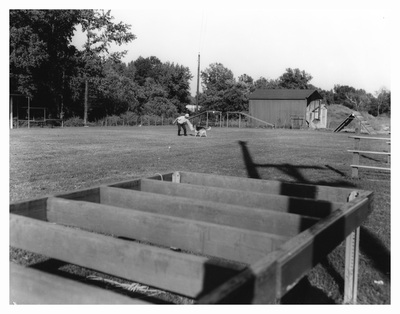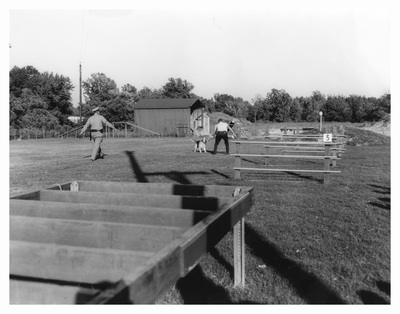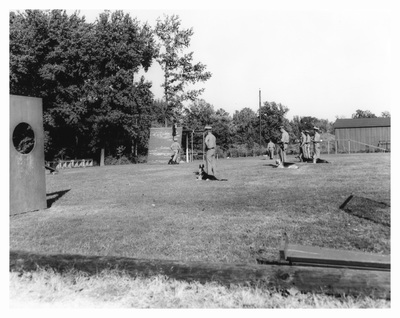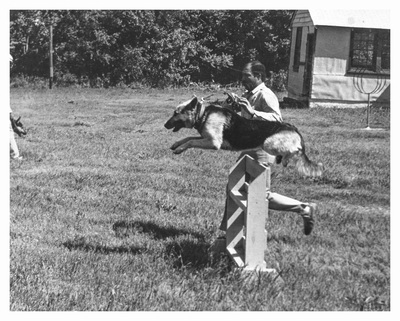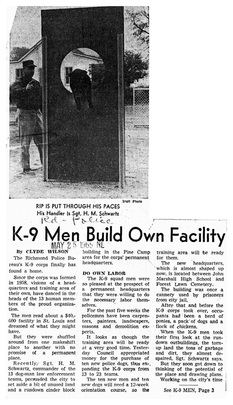 Richmond News Leader, dated May 25th, 1965
Richmond News Leader, dated May 25th, 1965
A New Location
After the increase of manpower to the Bureau, a second class was formed from within the ranks of the Police Bureau. This brought the K-9 Corps strength up to twelve (12) canine teams and one sergeant. The training was still being conducted in the Byrd Park area until an increase in parking facilities required the training area to be moved to the old Pine Camp Hospital Area in the north side of Richmond. Here they constructed an obstacle course required for training the dogs. But, this too was to be short lived.
It wasn’t until May of 1965 that the canine unit finally got what they had wished for. A training area all their own, the 13 man unit had been shuffled around for several years conducting their training and re-training anywhere they could find it. But until Sgt. H. M. Schwartz, who at that time was the commander of the K-9 Corps, requested the use of a bit of unused land located in the Pine Camp area, the City agreed.
There was a run-down cinder block building in addition to an old barn and house on the property. The building was once used to facilitate prisoners who used the building to can assorted food items to be consumed by the prisoners. The land became deserted and the buildings were allowed to decline in ruined. The only residence of the property when the k9 officers took over was a small herd of ponies, dogs and chickens. The neglected run-down buildings, tons of garbage and the torn up land was almost too much for the officers too handle but they soon got down to business and began the task of cleaning up.
In their spare time and on city time, the officers, filled-in a 30 foot well, knocked down a large, rickety barn, carried off years of accumulated garbage and burned off some of the debris. They then employed the help of professional laborers to build, landscape, and weld. They bulldozed an area for the obstacle course and designed the obstacles to be used in the training.
To the officer’s specifications, they constructed jumps, walking planks, tunnels that would be used to train the dogs. When all was said and done the course consisted of fence jumps, window jumps, bar jumps, hurdles, nine and ten foot scales (walls), eight-foot ladders and a crawl box. The crawl box was used to teach the dogs to crawl on command under low obstacles.
After the increase of manpower to the Bureau, a second class was formed from within the ranks of the Police Bureau. This brought the K-9 Corps strength up to twelve (12) canine teams and one sergeant. The training was still being conducted in the Byrd Park area until an increase in parking facilities required the training area to be moved to the old Pine Camp Hospital Area in the north side of Richmond. Here they constructed an obstacle course required for training the dogs. But, this too was to be short lived.
It wasn’t until May of 1965 that the canine unit finally got what they had wished for. A training area all their own, the 13 man unit had been shuffled around for several years conducting their training and re-training anywhere they could find it. But until Sgt. H. M. Schwartz, who at that time was the commander of the K-9 Corps, requested the use of a bit of unused land located in the Pine Camp area, the City agreed.
There was a run-down cinder block building in addition to an old barn and house on the property. The building was once used to facilitate prisoners who used the building to can assorted food items to be consumed by the prisoners. The land became deserted and the buildings were allowed to decline in ruined. The only residence of the property when the k9 officers took over was a small herd of ponies, dogs and chickens. The neglected run-down buildings, tons of garbage and the torn up land was almost too much for the officers too handle but they soon got down to business and began the task of cleaning up.
In their spare time and on city time, the officers, filled-in a 30 foot well, knocked down a large, rickety barn, carried off years of accumulated garbage and burned off some of the debris. They then employed the help of professional laborers to build, landscape, and weld. They bulldozed an area for the obstacle course and designed the obstacles to be used in the training.
To the officer’s specifications, they constructed jumps, walking planks, tunnels that would be used to train the dogs. When all was said and done the course consisted of fence jumps, window jumps, bar jumps, hurdles, nine and ten foot scales (walls), eight-foot ladders and a crawl box. The crawl box was used to teach the dogs to crawl on command under low obstacles.
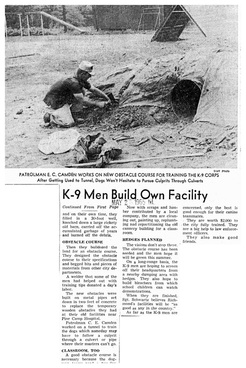 2nd part of article, Richmond News Leader, dated May 25th, 1965
2nd part of article, Richmond News Leader, dated May 25th, 1965
After mastery of the obstacle course and basic obedience work, the dogs began their training in attack work. Major Davis assisted in this phase of the training. The obstacle course consisted of eleven different types of jumps. Every jump was designed to expose the dog to what they may encounter when called upon to search areas where a suspect may be hidden. The following is a break down of those different jumps and what they were designed for.
Obstacle #1 - The Cat Walk: This jump was used to teach dogs to walk over any board placed between two buildings where the distance is too far to attempt to jump. It also taught the dog to walk across high places. In the center of the jump was an open space about three feet wide and the dogs were taught to jump across this space. The jump was approximately 8 feet high at its highest point.
Obstacle #2 - The “A” Jump: This was a scale type jump. This meant that the dog had to climb the “A” frame type jump and climb down the other side. It was designed to teach the dog to clamber over rooftops. It was approximately six feet high at the highest point.
Obstacle #3 - The Table Jump: This jump consisted of two tables approximately 4 feet high and placed end to end. One table was fixed in the ground and the other was movable. The movable table could me placed at different widths from the fixed table. Thus providing a greater distance for the dog to jump.
Obstacle #4 - The Culvert: This jump was designed from several empty 55-gallon drums. They were welded together and covered with dirt. This type of obstacle introduced the dog to searching any type of pipe culvert that the handler deemed necessary to check.
Obstacle #5 - The Hurdles Jump: This jump consisted of four hurdles approximately four feet high with adjustable bars to increase or decrease the height of the jump. This taught the dog to clear different height of fences.
Obstacle #6 - The Rafter Walls: This obstacle was used to teach the dog to step from rafter to rafter as what might be seen in the attics of homes, business’s or unfinished buildings.
Obstacle #7 - Picket Fence: This was designed to expose the dog to different type of fences and to be able clear these fences without any fear. These types of fences may be found in residential neighborhoods.
Obstacle #8 - Anchor Fence: This type of fence is used for the same reason that obstacle number #7 was designed.
Obstacle #9 - Window Jump: This was a large piece of plywood with a square hole cut into it. The square hole was to resemble a window and was positioned approximately 4 feet above the ground. It was designed to teach the dog to jump through open windows or any open section of a building.
Obstacle #10 - Ladder Climb: This jump consisted of an 8-foot ladder, which went up to a catwalk. The dog was taught to climb the ladder and then make it’s way down a descending catwalk to the ground.
Obstacle #11 - Wall Jump: This was a scale type jump. The dog had to ascend the 12-foot high wall climb over the top and then make it’s way down along two platforms to the ground.
